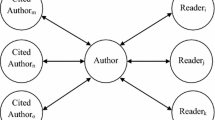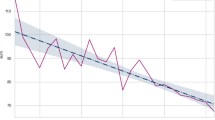Abstract
Citations in scientific writing fulfill an important role in creating relationships among mutually relevant articles within a research field. These inter-article relationships reinforce the argumentation structure that is intrinsic to all scientific writing. Therefore, determining the nature of the exact relationship between a citing and cited paper requires an understanding of the rhetorical relations within the argumentative context in which a citation is placed. To determine these relations automatically in scientific writing, we have suggested that stylistic and rhetorical cues will be significant. One type of cue that we have studied is the discourse cue, which provides cohesion among textual components. Another form of rhetorical cue involves hedging to modify the affect of a scientific claim. Hedging in scientific writing has been extensively studied by Hyland, including cataloging the pragmatic functions of the various types of cues. In this paper we show that the hedging cues proposed by Hyland occur more frequently in citation contexts than in the text as a whole. With this information we conjecture that hedging cues are an important aspect of the rhetorical relations found in citation contexts and that the pragmatics of hedges may help in determining the purpose of citations.
Preview
Unable to display preview. Download preview PDF.
Similar content being viewed by others
References
Di Marco, C., Mercer, R.E.: Toward a catalogue of citation-related rhetorical cues in scientific texts. In: Proceedings of the Pacific Association for Computational Linguistics Conference (PACLING 2003), pp. 63–72 (2003)
Di Marco, C., Mercer, R.E.: Hedging in scientific articles as a means of classifying citations. To appear in AAAI Spring Symposium on Exploring Attitude and Affect in Text (2004)
Fahnestock, J.: Rhetorical figures in science. Oxford University Press, Oxford (1999)
Garzone, M., Mercer, R.E.: Towards an automated citation classifier. In: Hamilton, H.J. (ed.) Canadian AI 2000. LNCS (LNAI), vol. 1822, pp. 337–346. Springer, Heidelberg (2000)
Gross, A.G.: The rhetoric of science. Harvard University Press, Cambridge (1996)
Gross, A.G., Harmon, J.E., Reidy, M.: Communicating science: The scientific article from the 17th century to the present. Oxford University Press, Oxford (2002)
Halliday, M.A.K.: Functional diversity in language as seen from a consideration of modality and mood in English. Foundations of Language 6, 322–361 (1970)
Hyland, K.: Hedging in scientific research articles. John Benjamins Publishing Company, Amsterdam (1998)
Knott, A.: A data-driven methodology for motivating a set of coherence relations. Ph.D. thesis, University of Edinburgh (1996)
Marcu, D.: The rhetorical parsing, summarization, and generation of natural language texts. Ph.D. thesis, University of Toronto (1997)
Mercer, R.E., Di Marco, C.: The importance of fine-grained cue phrases in scientific citations. In: Proceedings of the 16th Conference of the CSCSI/SCEIO (AI 2003), pp. 550–556 (2003)
Myers, G.: Writing biology. University of Wisconsin Press (1991)
Reynar, J.C., Ratnaparkhi, A.: A maximum entropy approach to identifying sentence boundaries. In: Proceedings of the Fifth Conference on Applied Natural Language Processing, Washington, D.C (1997)
Teufel, S.: Argumentative zoning: Information extraction from scientific articles. Ph.D. thesis, University of Edinburgh (1999)
Author information
Authors and Affiliations
Editor information
Editors and Affiliations
Rights and permissions
Copyright information
© 2004 Springer-Verlag Berlin Heidelberg
About this paper
Cite this paper
Mercer, R.E., Di Marco, C., Kroon, F.W. (2004). The Frequency of Hedging Cues in Citation Contexts in Scientific Writing. In: Tawfik, A.Y., Goodwin, S.D. (eds) Advances in Artificial Intelligence. Canadian AI 2004. Lecture Notes in Computer Science(), vol 3060. Springer, Berlin, Heidelberg. https://doi.org/10.1007/978-3-540-24840-8_6
Download citation
DOI: https://doi.org/10.1007/978-3-540-24840-8_6
Publisher Name: Springer, Berlin, Heidelberg
Print ISBN: 978-3-540-22004-6
Online ISBN: 978-3-540-24840-8
eBook Packages: Springer Book Archive




